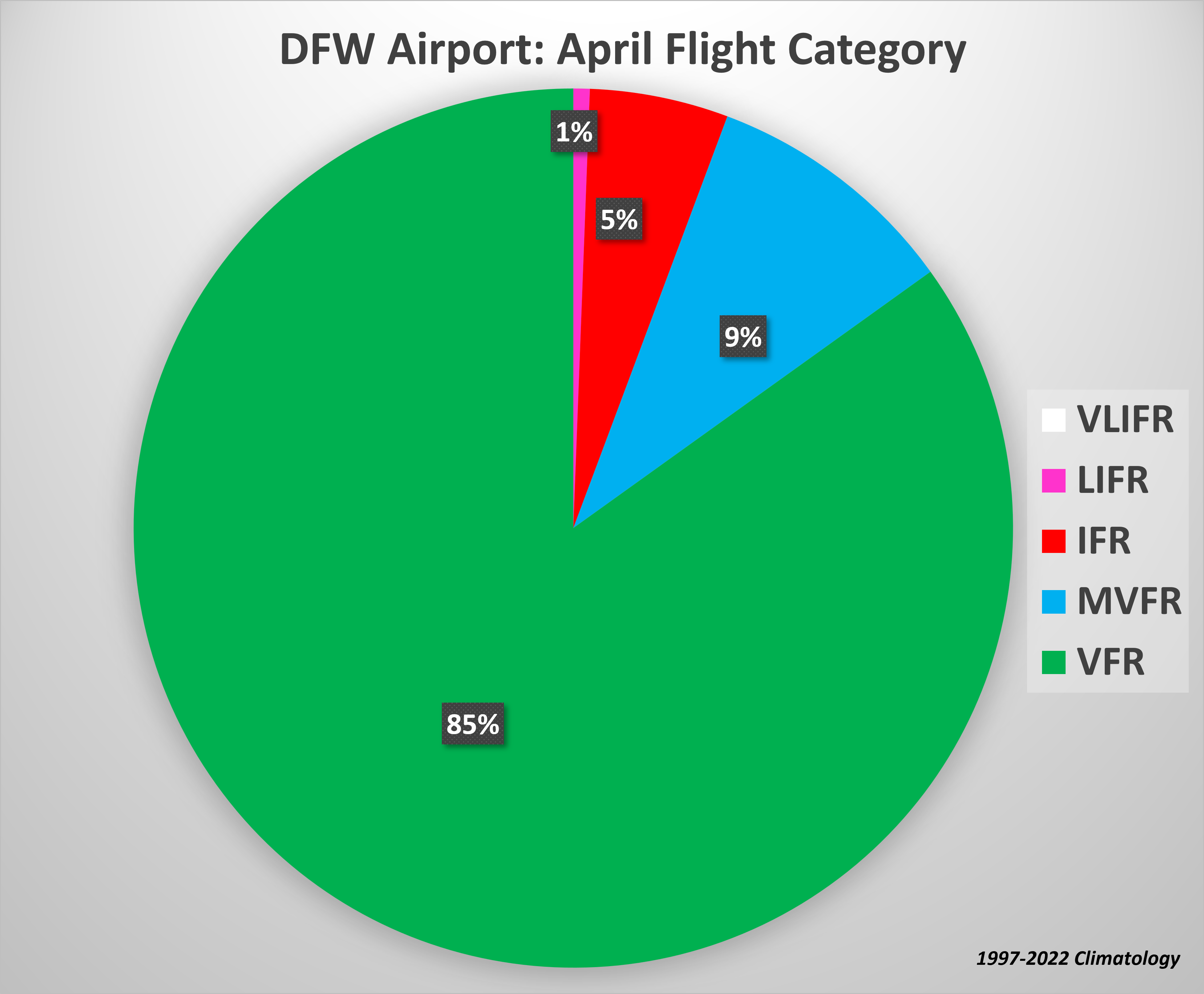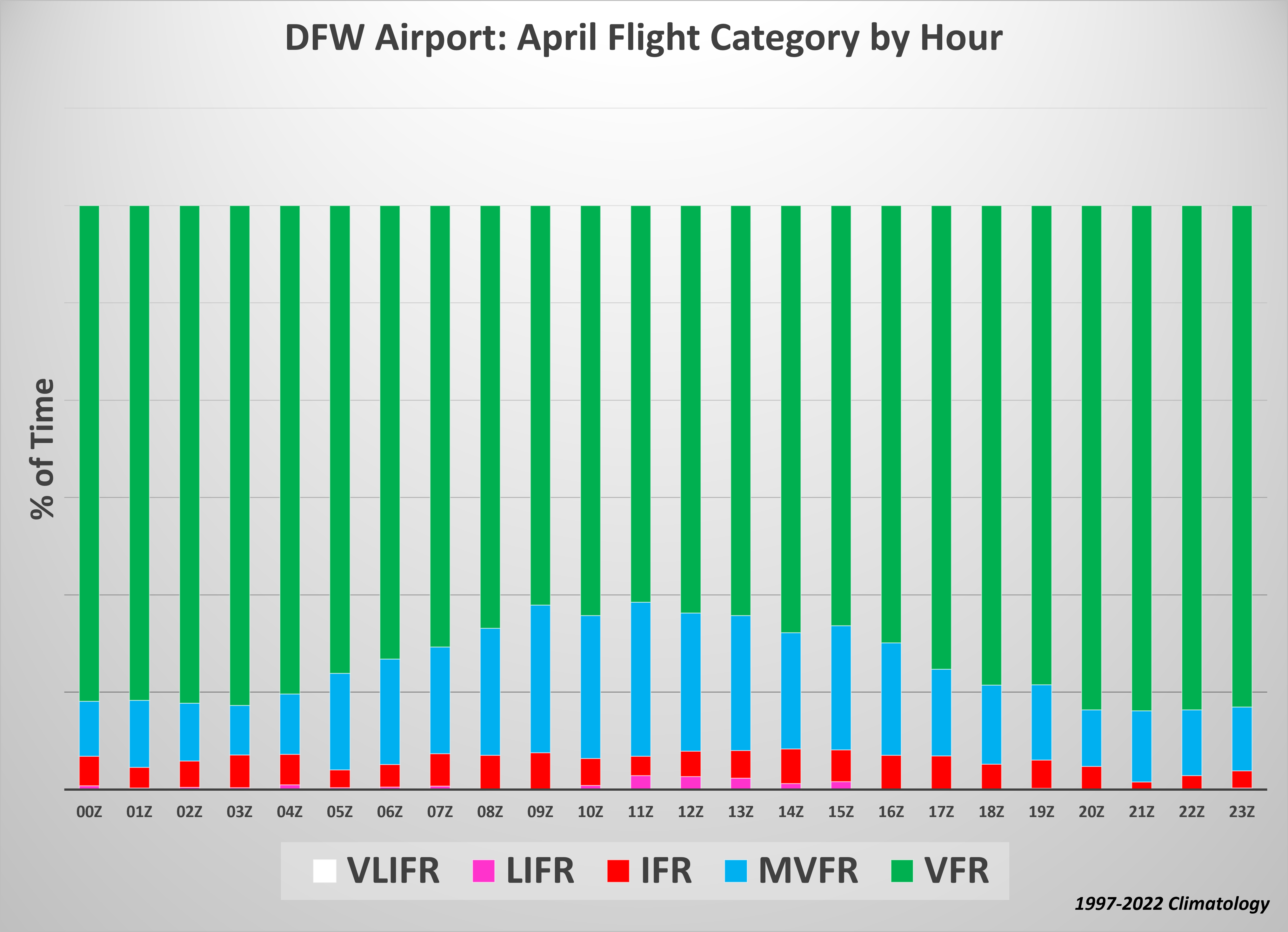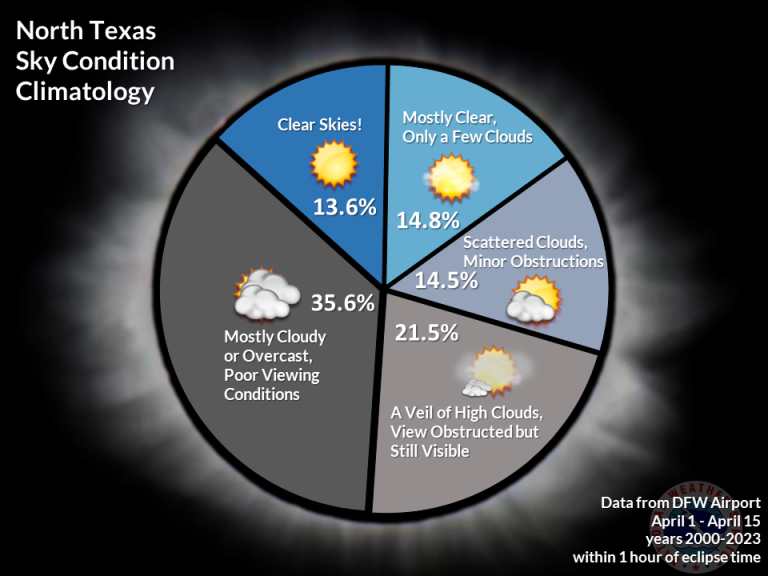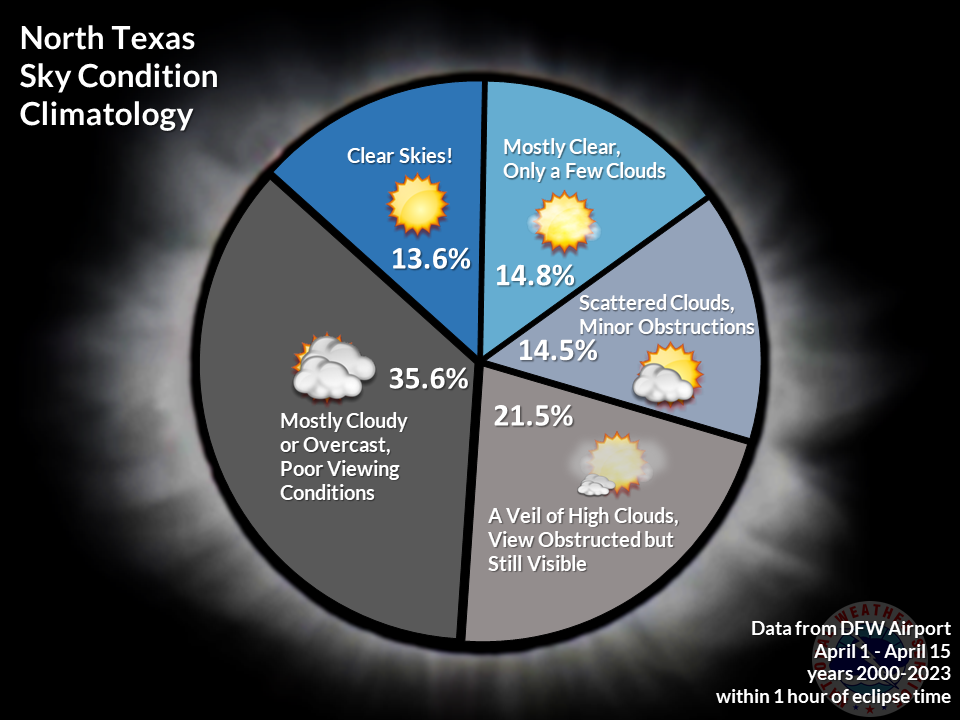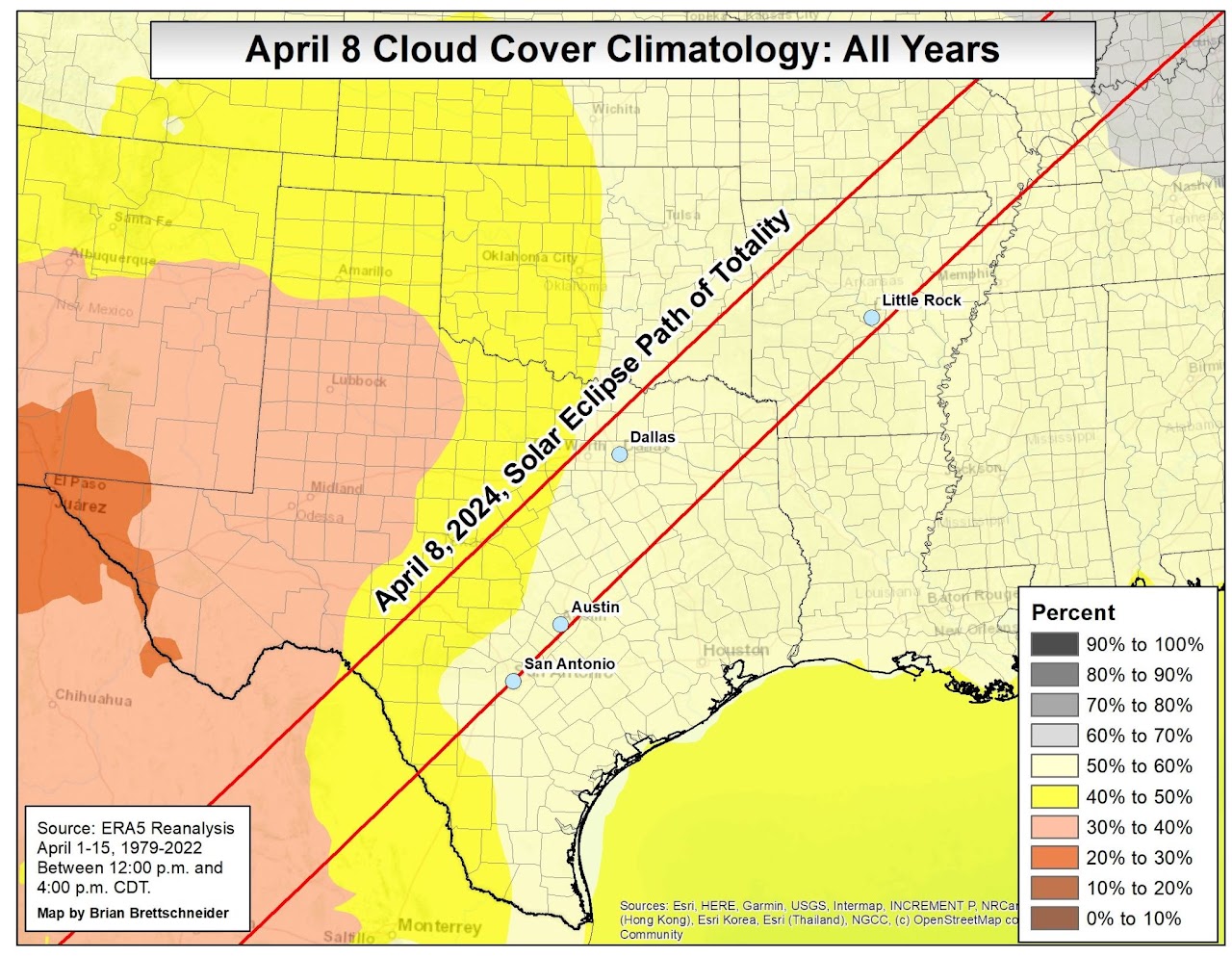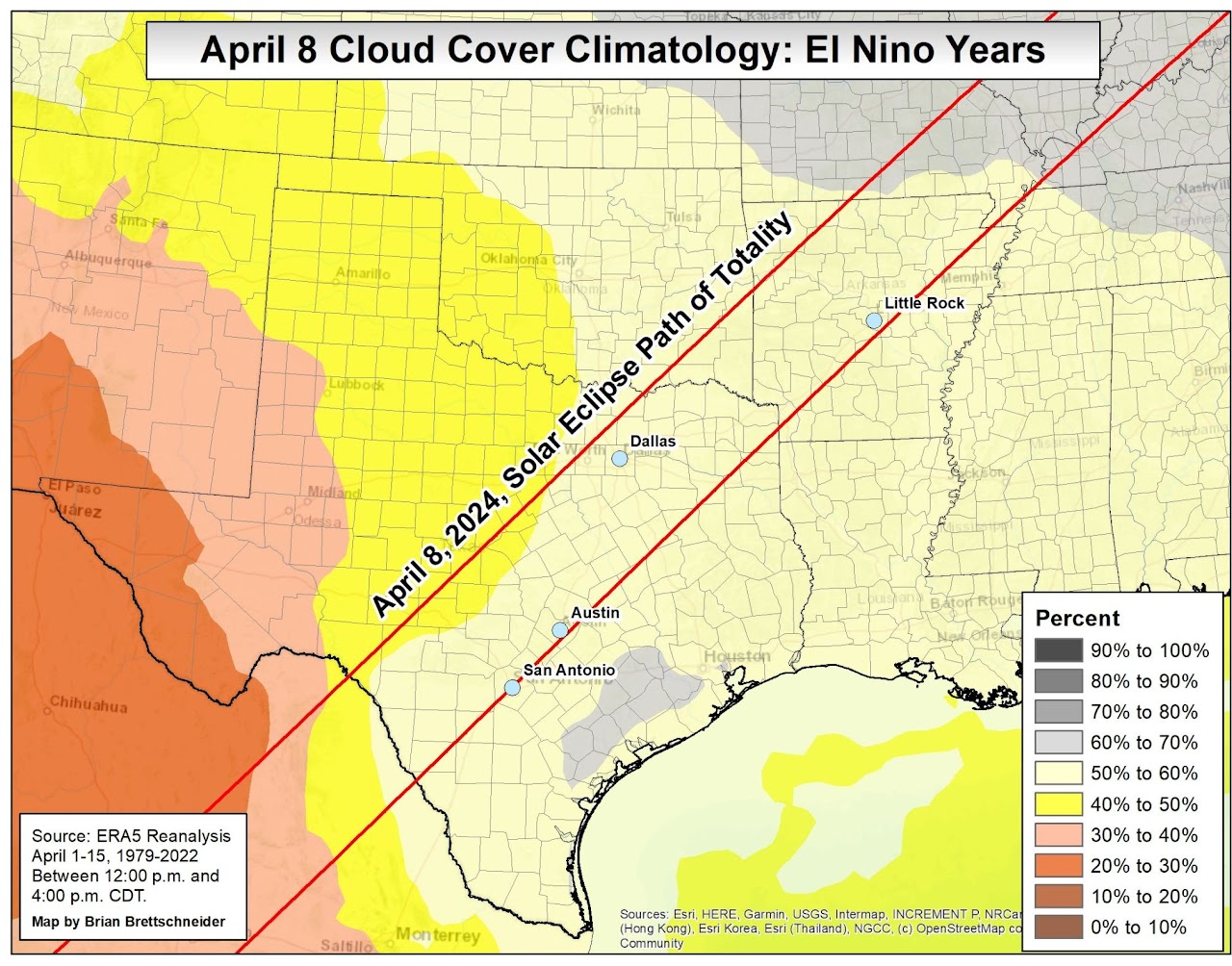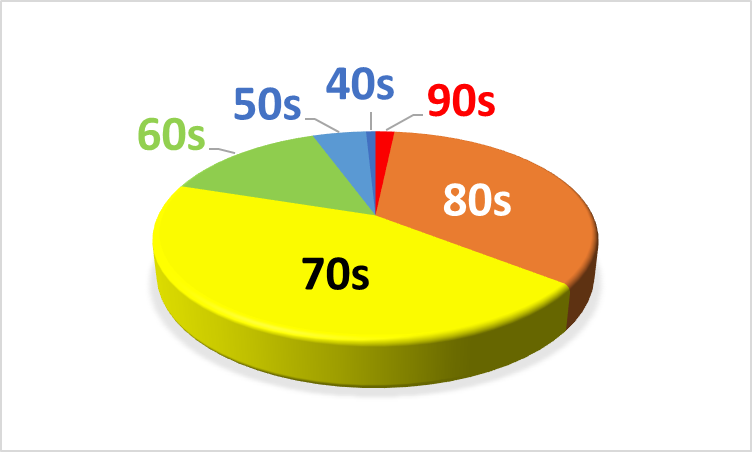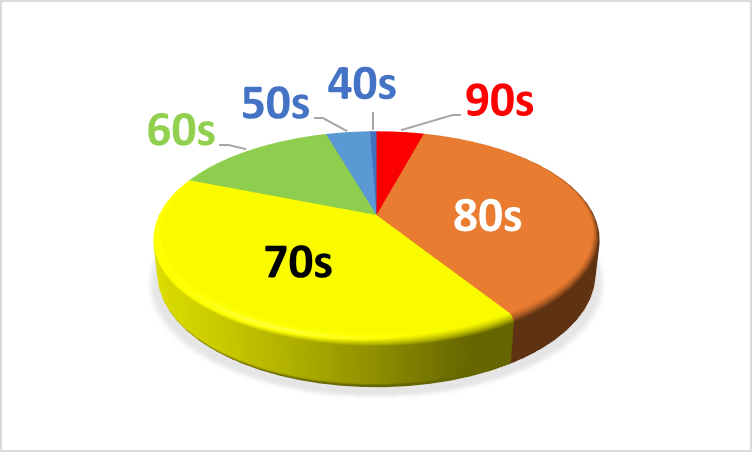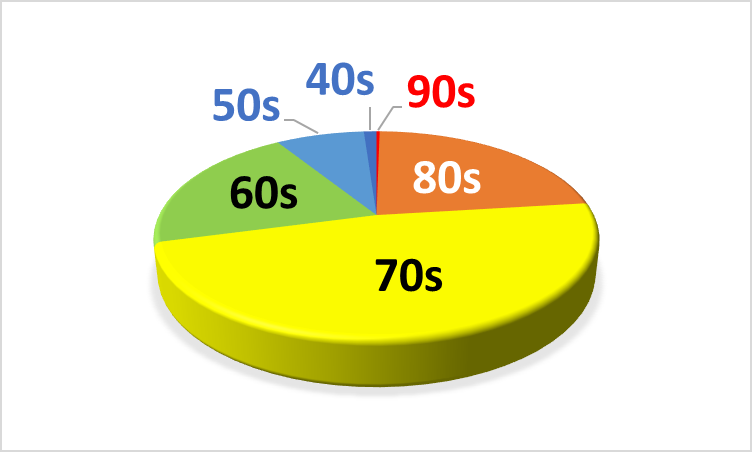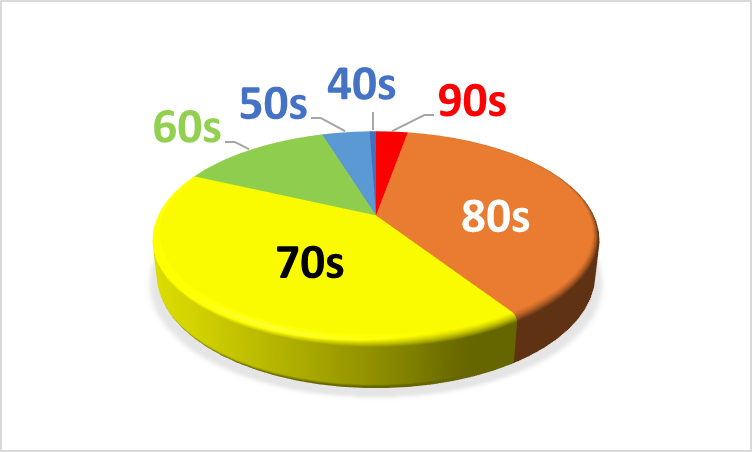In the first half of April, there are often clouds in the afternoon. Clear or mostly clear skies occur less than 30% of the time, but mostly cloudy or overcast skies resulting in poor viewing conditions only occur about 35% of the time. Even with the presence of clouds, many aspects of the eclipse will still be visible. In other words, in most cases as shown in the pie chart below, sky conditions may still allow for adequate eclipse viewing.
On average, sky conditions are better and cloud cover is higher in the mountains of Northeast Texas. Although cloud cover tends to increase during the colder months of El Niño, the difference is negligible in North and Central Texas in April.
|
|
Map created by NOAA's Brian Brettschneider
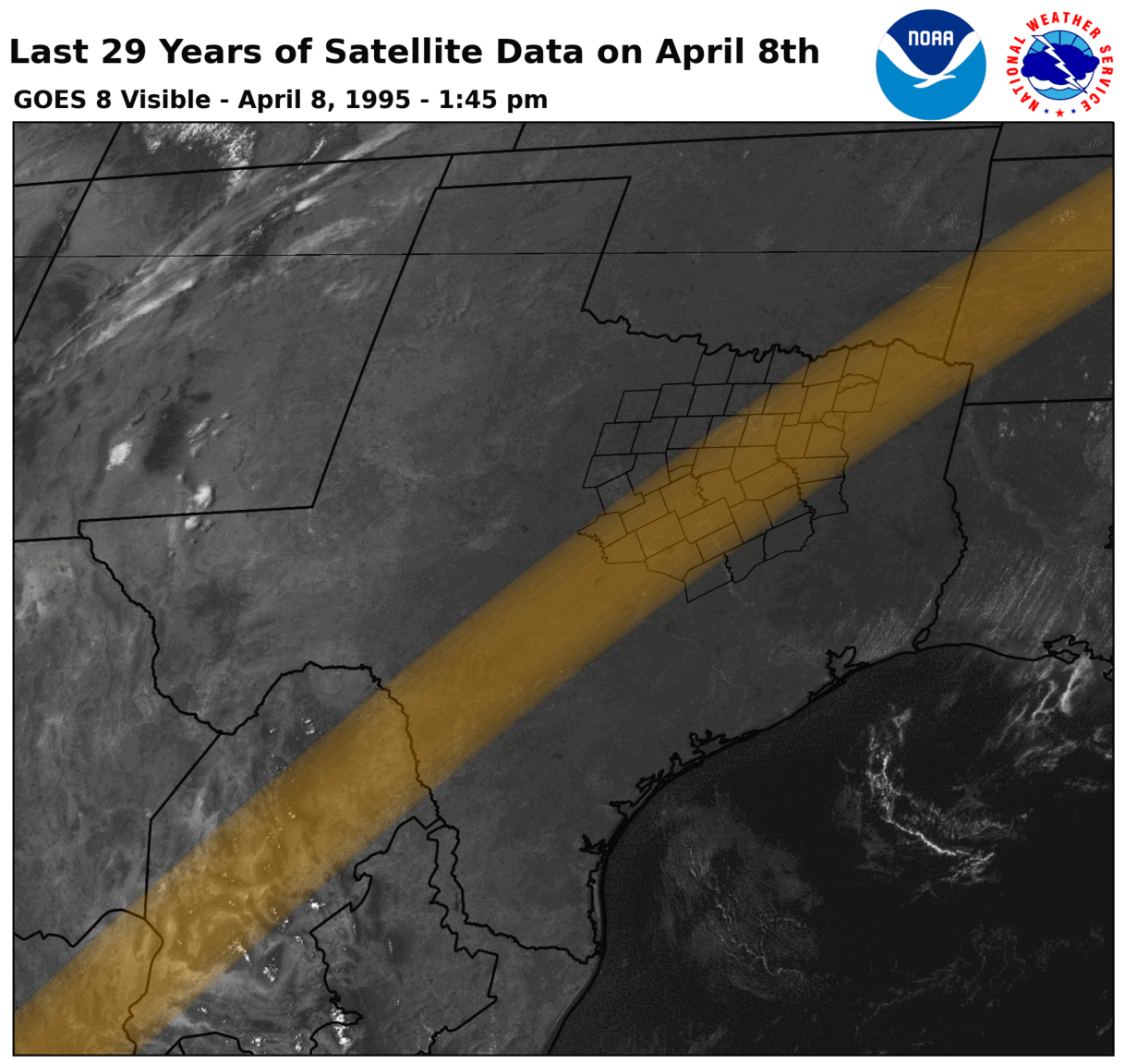
On April 8, the normal maximum temperature is in the 70s and the normal low temperature is in the 50s. All-time highs typically occur in the 90s, while all-time lows occur in the low 30s.
The pie chart shows the distribution of high temperatures in the first half of April. High temperatures in the 80s are more common in Central Texas and less common in Northeast Texas. Highs in the 70s dominate North Texas. Cooler weather (highs of 60 degrees or lower) is more common in Northeast Texas, occurring nearly 30 percent of the time. In Dallas/Fort Worth, Waco and Killeen, temperatures below 70° occurred less than 20% of the time.
Rain chances are slightly higher in Northeast Texas, but precipitation occurs about one-third of the time in the region. Thunderstorms occur more than 20% of the time in Northeast Texas, but the chance of thunderstorms in Killeen is as low as 14%. Severe weather in our region peaks in the spring, when thunder and lightning can include large hail, damaging winds and flooding. Spring tornado rates also peak in North and Central Texas. Residents and visitors are therefore urged to stay informed about weather conditions.
|
|
